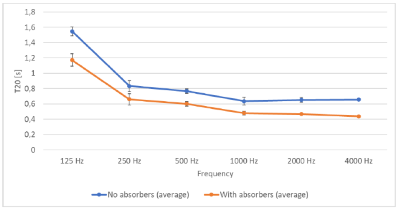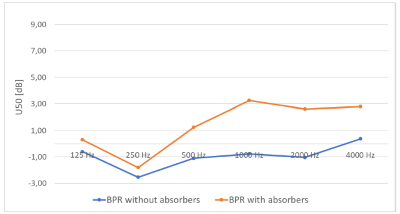
Mai-Britt Beldam
Room acoustics have been a big part of my life and working first with room acoustics in education facilities in Denmark and then healthcare facilities globally has taught me one important thing: We are not there yet.


Together with 4 students from DTU (Technical University of Denmark) Ecophon had the opportunity to investigate the sound environment in a maternity ward at Randers Hospital. 60 midwives work at the maternity ward and deliver approximately 2200 babies per year.
In this project, all the measurements, questionnaires and data analysis were done by the students and measurements were done according to ISO 3382-2 utilizing the Dirac software to analyze the impulse responses. A report ‘Analysis of Room Acoustics at Randers Hospital maternity ward’ was done by the four students: Ida Ørduk Hofmann, Sara Delagarde Jørgensen and Rojan Turan, as part of their course ‘Architectural Acoustics’.
In Denmark there has been no building regulations in regards to acoustics but in 2018 a new guideline (BR18) was implemented. BR18 divides hospital rooms into two categories:
patient bedroom
examination/treatment room
The regulation recommends a design value for the reverberation time of 0.6 s for both room types in the frequency range of 125-4000 Hz (with a liberation of 20 % for 125 Hz).
Speech clarity (C50) is not in the regulation but knowing that there is a lot of communication going on in such a ward we chose to investigate that together with reverberation time.
Measurements of a delivery room showed that the room actually lived up to the regulation and also that the midwives scored the acoustics of the room as ‘good’ or ‘neutral’.

Unfortunately, not all rooms in the ward got so positive feedback and especially a birth pool room got really negative evaluations from the midwives. They said that they tried not to talk in the room, that the splash of water alone was noisy – and one told us that she tried not to have too much light in the room, since both sound and light were too much stimuli.
When looking at the acoustic measurements and the feedback from the midwives it was clear that the room had acoustic challenges. It was far from the regulation demands and half of the staff evaluated the room as either ‘bad’ or ‘very bad’.

Looking at the surfaces of the room it was very clear why the birth pool room had room acoustic challenges since all the surfaces were very hard. Traditionally hospitals are built with hard surfaces because the hygiene demands are high and unfortunately the acoustic performance of a surface is somehow ‘forgotten’.
It was impossible for Ecophon to do what we normally would do in rooms with bad acoustics – change the ceiling tiles into class A and install sound absorbing wall panels. But with the help of duct tape and the students’ engineering skills a quick installation of wall panels was made to see what that alone could do. Below you can listen to the differences and to hear that it was quite remarkable change!
After installing the wall panels, measurements showed that not only the reverberation dropped to a better level also the speech clarity went up! (NB. In this project there was also a focus on the background noise. Therefore, the C50 was converted to U50, which takes the background noise into consideration).
 |
 |
The panels that were used in the birth pool room can withstand disinfection and daily cleaning.
If you want to know more about me and about the project, see my profile and contact information below.